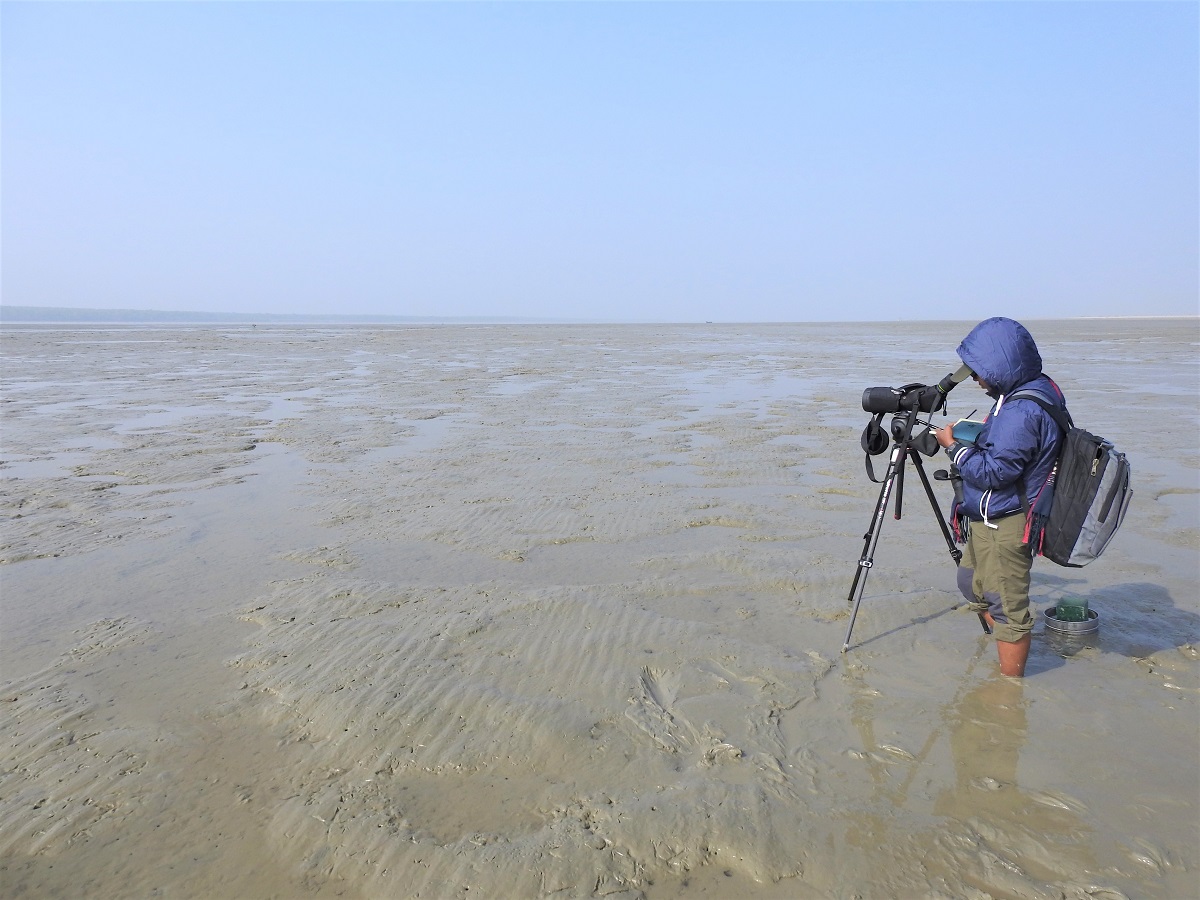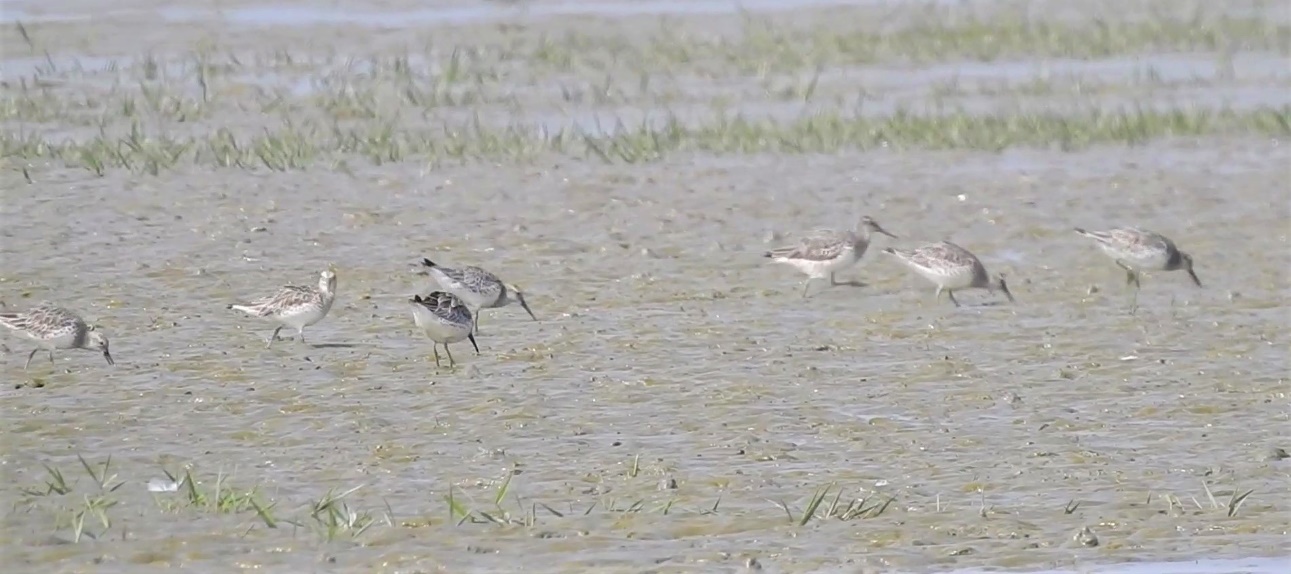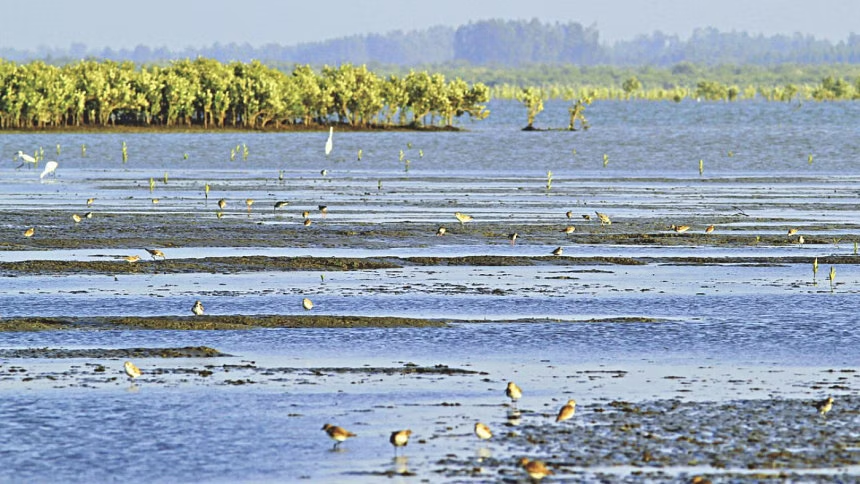Mud Flat
Mudflats, otherwise known as tidal flats, are coastal wetlands that form when mud is left behind by tides or rivers. They are found in sheltered regions such as bayous, lagoons, estuaries, and bays. Mudflats might be seen geologically as exposed layers of bay mud, a result of the deposition of mud by tides or rivers, estuarine silts, marine animal detritus and clays. The majority of the sediment in a mudflat is within the intertidal zone, therefore the flat is submerged and exposed twice daily.
Mudflats, mangroves, and salt marshes together constitute an important ecosystem. Mudflats attract a large number of migratory shorebirds. These intertidal areas also house several species of crabs, fish, mollusks and marine worms which form the food base for the migratory birds. Thus, mudflats are often considered significant bird-watching spots.
On the other hand, salt marshes are areas of intertidal land colonized by plants adapted to high salinities and able to withstand immersion in seawater. They extend from the mean high water of neap tides to the mean high water of spring tides. Saltmarshes are highly productive habitats and home to many invertebrates. They have high plant diversity due to the variety of tidal zones and are important habitats for wintering and passage birds and breeding waders.
In Bangladesh, the coastal mudflats are the hidden treasures of biological diversity. Every year more than one hundred thousand birds visit these mudflats to feed on the invisible life that flourishes on mud, silt and clay found in intertidal areas. These areas generally support a wide range of invertebrates, which are exceptionally fertile. These include benthic organisms, mollusks, crustaceans and marine worms. Mudflats provide an important nursery and feeding ground for many fish species. The coastal mudflats of Bangladesh still remarkably hold seven globally threatened and twelve other near-threatened resident and migratory birds such as the critically endangered Spoon-billed Sandpiper, endangered Nordmann’s Greenshank and Great Knot. The 100-150 ha of grassy mudflat at Badar Mokam (Shahparir Dwip) is an important spoon-billed sandpiper (Calidris pygmaea) habitat. Intertidal mudflats along the Naaf River are suitable wader feeding grounds.
A large extent of mudflats at Subrang and Shahparir Dweep have been converted and used for salt production (Rashid 2019). Many of the mudflats in different areas of the country are still wild and unchanged, such as Sonadia Island in Cox’s Bazaar and the islands around Hatiya, Sandwip and Bhola. They are yet to be marred by development. However, recent plans to embank Sonadia Island and construct coal-fired power plants and LNG terminals may deteriorate the natural landscape and obliterate ecological functions. The Sundarbans in the Bangladesh coastal fringe is intersected by a complex network of tidal waterways, mudflats and small islands of salt-tolerant mangrove forests.
Attention to coastal or intertidal wetlands has been largely limited, or even totally omitted as areas of conservation interest by many of our decision-making bodies. Yet mudflats and tidal areas offer immense and irreplaceable value in biological diversity, number, uniqueness, beauty and their contributions to human livelihoods.

Figure 1: A congregation of wintering waders on a mudflat

Figure 2: Open mudflat stretch during low tide in Nijhum Dwip (Credit: A.Viswanathan)

Figure 3: Flock of Great Knot species while foraging on a mudflat of Nijhum dwip (Credit: Irin Sultana)

Figure 4: Shorebirds mainly feed on mudflats during low tide as the tidal water recedes (Credit: The Daily Star)
References:
Rashid SMA (2019) Coastal Biodiversity – A Review. Report prepared for Long Term Monitoring Research and Analysis of Bangladesh Coastal Zone. 30 pp.